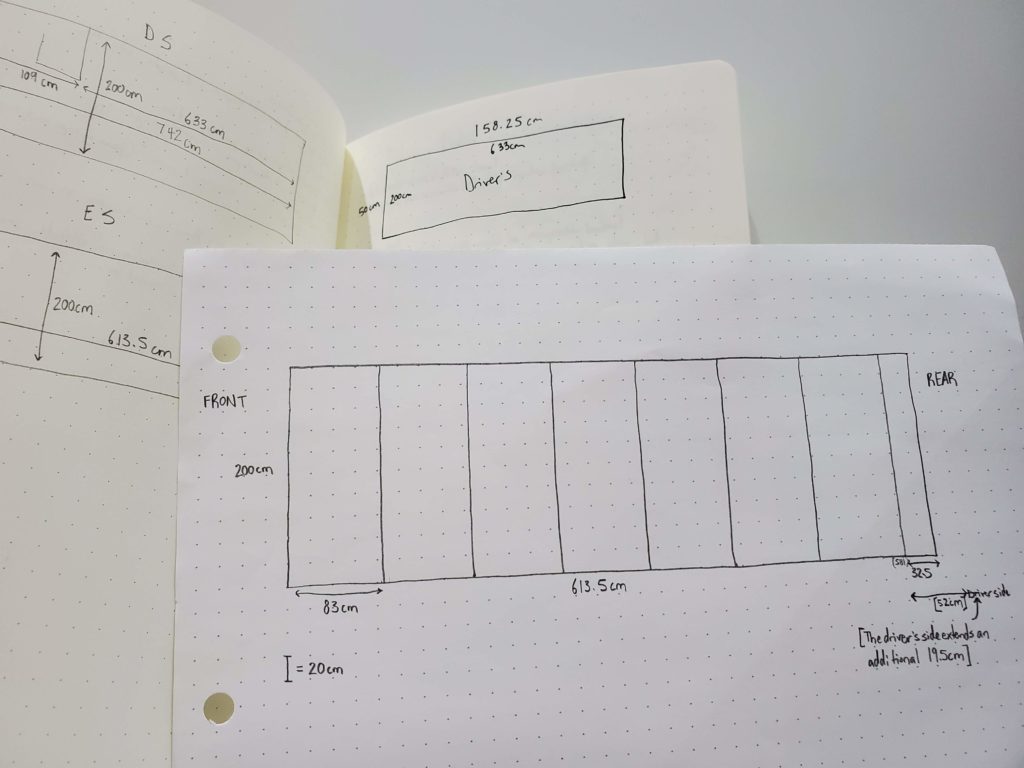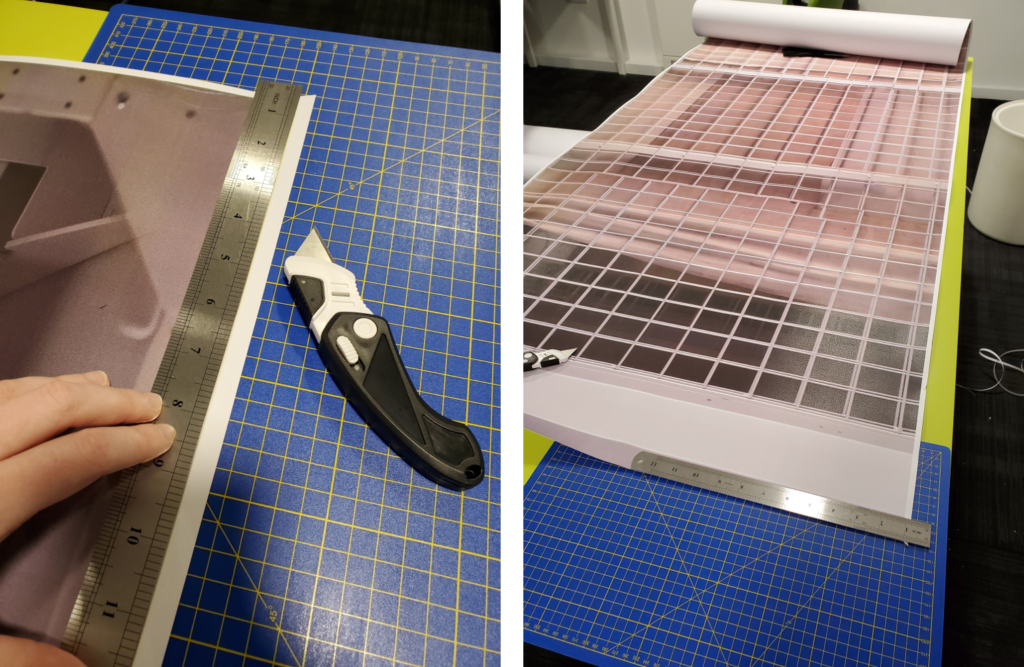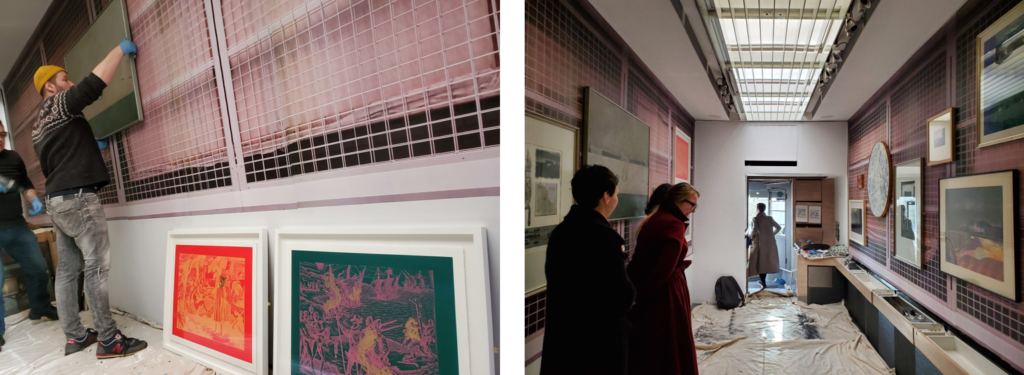As discussed in my case study, we were initially very committed to displaying the works on collection storage racks, enabling viewers to see what the works “normally” look like in the collection itself. I got in touch with both the Van Abbe Museum and MIMA, who also used storage racking in [an exhibition], to ask how they managed security and stability concerns. Their strategies, however, were still not secure enough to address the concern of how the works would shift while the bus was in motion, which was obviously not a constraint they faced.
To mitigate these risks to the art, we instead investigated the possibility of creating a wallpaper for the bus that would provide a backdrop of a storage rack. We were initially uninspired by this suggestion, worrying that it would look “fake” and seem patronizing to our viewers, but we decided to research its feasibility regardless. I volunteered to lead this part of the project, from initial research to installation.




I was very impressed with the final product. The image had a depth that I hadn’t anticipated, and truly appeared to be a three-dimensional rack. I had initially been concerned about the colour quality, since we could only afford to use Reprographics’ least-expensive printer, but in person the colours actually helped increase the three-dimensional effect of the image—and it was incredibly crisp.

Thinking back to Charlotte Klonk’s remarks about the importance of “honest” installations (discussed in my case study), I feel that this photographic reproduction of the rack was in fact as “honest” as using a real storage rack would have been. It added useful visual context when explaining the premise of a “university collection” to members of the public, who all quickly grasped what was being represented.
An unexpected benefit to the wallpaper was how easy it made the artwork installation. Its grid-like pattern made it easy to communicate clearly with the installers and each other where exactly we wanted works situated, and by using the lines of the rack to make things appear level we didn’t have to worry about levelling works ourselves. The bus was ready to tour!

[Word Count: 355]

